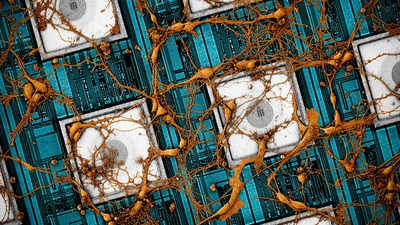- News
- Gadgets News
- Samsung wants to “copy and paste” human brain on a chip, here’s how
Trending
This story is from September 27, 2021
Samsung wants to “copy and paste” human brain on a chip, here’s how
South Korean tech giant Samsung has announced that it plans to start working on making neuromorphic chips that can mimic the human brain.

South Korean tech giant Samsung has announced that it plans to start working on making neuromorphic chips that can mimic the human brain. Engineers and scholars from Samsung and Harvard University are going to be working on the project and have published a Perspective paper, titled ‘Neuromorphic electronics based on copying and pasting the brain’, by Nature Electronics. The co-corresponding authors are Donhee Ham, Fellow of Samsung Advanced Institute of Technology (SAIT) and Professor of Harvard University, professor Hongkun Park of Harvard University, Sungwoo Hwang, President and CEO of Samsung SDS and former Head of SAIT, and Kinam Kim, Vice Chairman and CEO of Samsung Electronics.
The authors, in their own words, want to ‘copy’ the brain’s neuronal connection map and then ‘paste’ it onto a “high-density three-dimensional network of solid-state memories”, which would be a network of non-volatile memories like the commercial flash memories found in solid-state drives (SSD), or ‘new’ memories such as resistive random access memories (RRAM) – by programming each memory “so that its conductance represents the strength of each neuronal connection in the copied map.”
The team plans to carry out the ‘brain-copying’ process using a nanoelectrode array developed by Dr. Ham and Dr. Park. With this effort, the team wants to create a memory chip that “approximates the unique computing traits of the brain – low power, facile learning, adaptation to environment, and even autonomy and cognition – that have been beyond the reach of current technology.”
Samsung says that with the human brain having an estimated close to 100 billion or so neurons and a thousand or so more synaptic connections, the ultimate neuromorphic chip will require 100 trillion or so memories and to integrate all of these memories could be made possible by 3D integration of memories.
As per Dr Ham, “working toward such a heroic goal will push the boundaries of machine intelligence, neuroscience, and semiconductor technology.”
The authors, in their own words, want to ‘copy’ the brain’s neuronal connection map and then ‘paste’ it onto a “high-density three-dimensional network of solid-state memories”, which would be a network of non-volatile memories like the commercial flash memories found in solid-state drives (SSD), or ‘new’ memories such as resistive random access memories (RRAM) – by programming each memory “so that its conductance represents the strength of each neuronal connection in the copied map.”
The team plans to carry out the ‘brain-copying’ process using a nanoelectrode array developed by Dr. Ham and Dr. Park. With this effort, the team wants to create a memory chip that “approximates the unique computing traits of the brain – low power, facile learning, adaptation to environment, and even autonomy and cognition – that have been beyond the reach of current technology.”
Samsung says that with the human brain having an estimated close to 100 billion or so neurons and a thousand or so more synaptic connections, the ultimate neuromorphic chip will require 100 trillion or so memories and to integrate all of these memories could be made possible by 3D integration of memories.
As per Dr Ham, “working toward such a heroic goal will push the boundaries of machine intelligence, neuroscience, and semiconductor technology.”
End of Article
FOLLOW US ON SOCIAL MEDIA
